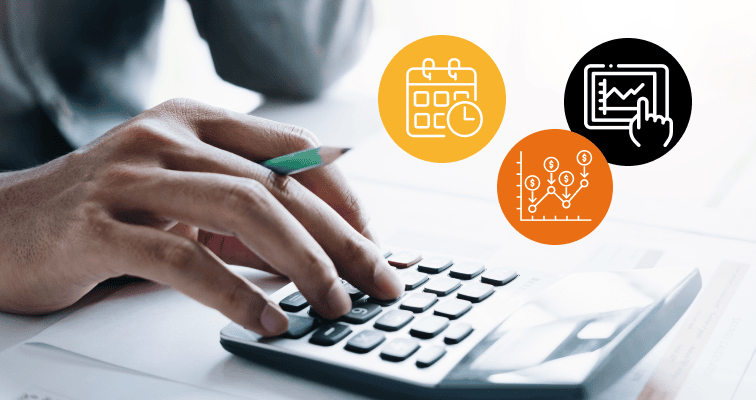Dividend stocks are paid to shareholders of dividend-paying companies. This article will help you to learn what they are, how they work, and how to incorporate these assets into your investment profile to generate passive income.
Some companies pay their shareholders a portion of their profits; a payment known as a dividend. When a company opts to pay dividends from its profits, the stock is known as a dividend stock. If you invest in these stocks, you will receive a dividend relating to your holding. This can take the form of a cash payment or additional shares in the company.
Either way, dividends and dividend stocks have the potential to increase your net wealth, and due to their passive nature, are attractive to many investors.
Why do people invest in dividend stocks?

Dividend stocks have the potential to generate two types of returns for investors:
- The first is the capital gain element, true for all investments, which occurs if the price of the asset rises.
- The second is a dividend payment, made to investors when the dividend-paying company decides to intermittently distribute a percentage of profits to shareholders.
Dividend stocks are those which are identified by investors as being likely to pay dividends on a regular basis, and that can be attractive to investors who want to benefit from a consistent stream of passive income.
While neither capital gains nor dividend payments can be guaranteed, it is possible to buy stocks which are relatively more likely to pay a dividend, often because the firm involved has an established track record of doing so.
The vast majority of dividend stocks which might form part of a dividend portfolio are already listed on a stock exchange. This is because dividend stocks are often the shares of well-established companies, operating in mature markets.
These companies, such as Unilever Plc and AT&T Inc, have certain competitive advantages, which mean they are regularly generating profits, and when that happens, the directors of the company might decide to share those profits with investors, rather than use that capital to invest in new projects.
What impacts stock dividends?

The largest factor in determining whether dividends are paid, and what size they are, will be the underlying performance of the company involved. The greater the profit, the greater the likelihood of dividends being paid, and vice versa.
As shareholders are ultimately the owners of a company, large institutional investors with a significant shareholding might try to liaise with the directors to influence whether dividends are paid or not. The decision regarding how large a dividend payment should be, will factor in what proportion of profits should be retained as working capital, invested in new projects, or paid as a dividend.
Tip: The term “dividend cut” explains when a stock regarded as dividend stock pays lower-than-expected dividends to investors.
When are dividends paid?
The date when dividends are paid is determined by a firm’s directors. These dates will be made public in advance of the actual payment being processed, and the exchange on which the stock is listed will hold an official record of the quantity and date of upcoming (and historical) dividend payments. Companies will also issue public statements with the details of any upcoming dividends.
Many companies announce and pay dividends at the end of a reporting period which are typically quarterly, semi-annually, or annually. That allows the directors to make an informed decision based on the earnings report for that particular time period.
There’s nothing which stipulates that a company which typically pays dividends annually can’t decide to pay them semi-annually, but as most investors and shareholders like certainty, firms tend to stick to established practices.
There are three important dates to track when dividend investing:
- Record date: The date on which those investors who are registered as shareholders in a company are recorded and determined to be eligible for a dividend payment.
- Ex date: The period after the record date when anyone who buys the stock will not be entitled to receive the next dividend instalment.
- Payment date: The date on which dividends in the form of cash or additional stocks are credited to an investor’s account.
If you hold a stock on record date, you will receive any applicable dividend payment regardless of when you bought or plan to sell the stock.
The tax treatment of dividends will be determined by the country in which the stock is listed and your place of domicile. It is highly likely that capital gains tax (CGT) deductions will be made on dividend income, and it is worth ensuring that you are familiar with how CGT works so that you can have a realistic expectation of the net amount due to you.
Risks of investing in dividend stocks

Like any type of investment, investing in dividend stocks carries risks, especially during economic downturns when companies may suspend or reduce dividend payments to preserve cash. This can disappoint income-seeking investors and lead to underperformance in volatile markets.
In addition, investors who hold dividend stocks as part of a long-term strategy but fail to monitor them regularly, risk missing important changes, such as declining earnings or unsustainable payout ratios, which could signal potential dividend cuts or stock price declines. Regular monitoring is crucial for risk management, and to ensure that dividend stocks align with long-term financial goals and expectations.
Final thoughts
Understanding the basics of dividend investing is the first step towards understanding why the approach is so popular. Even if you’re not intending to apply all of your capital to a dividend strategy, it is wise to make room for some dividend stocks in any portfolio, because of the way they offer portfolio diversification as well as a form of passive income.
Use the eToro Academy to learn more about investing.
Quiz
FAQs
- How do I pay the tax element on dividend gains?
-
This will depend on where you live and how you hold your shares. If you use a reputable broker, it is highly likely that tax will be withheld by the broker, who will make direct payment to the relevant tax authority. It remains your responsibility to check that this is done and ensure that dividend tax payments are correct and up to date.
- What is a scrip dividend?
-
A scrip dividend is one where an investor receives the dividend in the form of additional stocks, rather than cash. It is worth establishing if as a shareholder you can opt to receive stock instead of cash, as there may be differences in the net value of the two different forms of payment.
- Are dividends always a good signal to investors?
-
Yes, and no. On the one hand, dividends are a sign that a company’s management team is confident enough to share profits with investors, rather than retain them to insure against an economic downturn. On the other hand, it can be seen that a firm has reached some kind of maximum capacity and has few options to expand into new markets and products.
This information is for educational purposes only and should not be taken as investment advice, personal recommendation, or an offer of, or solicitation to, buy or sell any financial instruments.
This material has been prepared without regard to any particular investment objectives or financial situation and has not been prepared in accordance with the legal and regulatory requirements to promote independent research. Not all of the financial instruments and services referred to are offered by eToro and any references to past performance of a financial instrument, index, or a packaged investment product are not, and should not be taken as, a reliable indicator of future results.
eToro makes no representation and assumes no liability as to the accuracy or completeness of the content of this guide. Make sure you understand the risks involved in trading before committing any capital. Never risk more than you are prepared to lose.


